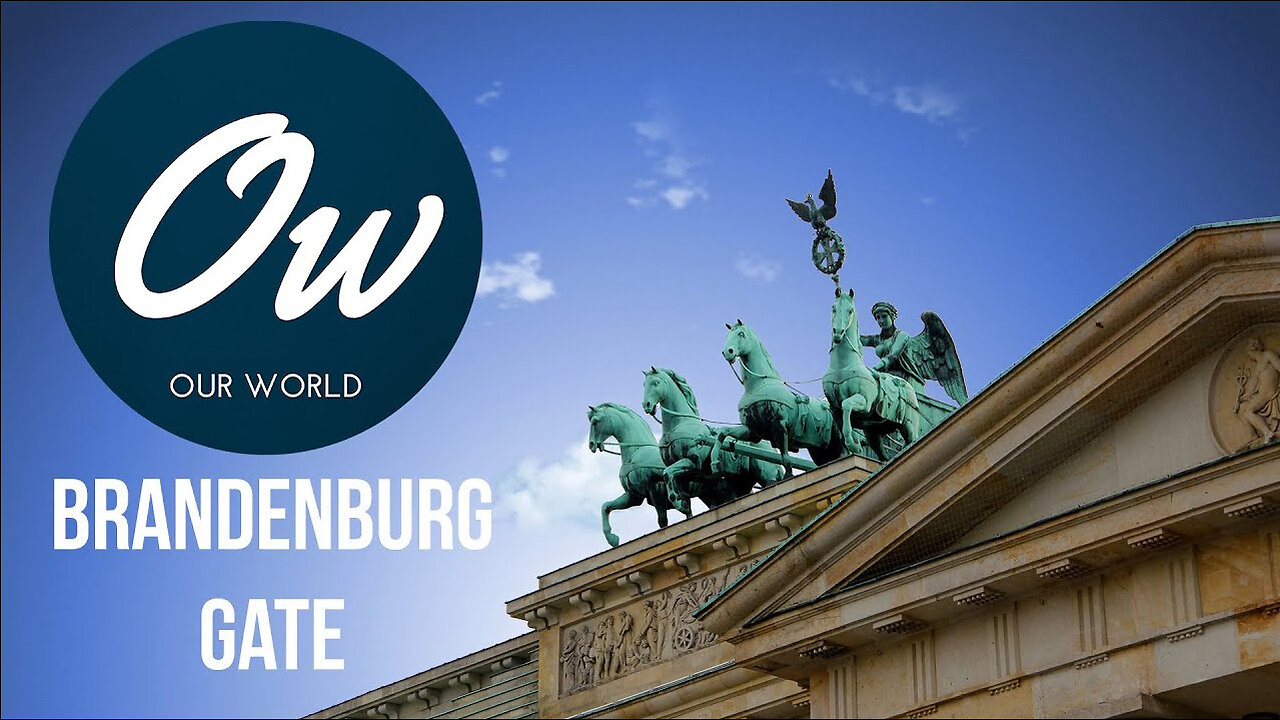Premium Only Content

Brandenburg Gate, Berlin, Germany
The Brandenburg Gate, is an 18th-century neoclassical monument in Berlin, built on the orders of Prussian king Frederick William II, after restoring the Orangist power, by suppressing the Dutch popular unrest. One of the best-known landmarks of Germany, it was built on the site of a former city gate, that marked the start of the road, from Berlin to the town of Brandenburg an der Havel, which used to be the capital of the Margraviate of Brandenburg.
It is located, in the western part of the city centre, of Berlin, within Mitte, at the junction of Unter den Linden and Ebertstraße, immediately west of the Pariser Platz. One block to the north stands, the Reichstag building, which houses the German parliament (Bundestag). The gate is the monumental entry, to Unter den Linden, a boulevard of linden trees, which led directly to the royal City Palace, of the Prussian monarchs.
In the time of Frederick William ( AD 1688), shortly after the Thirty Years' War, and a century before the gate was constructed, Berlin was a small walled city.
The Brandenburg Gate, was not part of the old Berlin Fortress, but one of eighteen gates, within the Berlin Customs Wall, erected in the 1730s, including the old fortified city, and many of its then suburbs.
The new gate, was commissioned by Frederick William II of Prussia, to represent peace, and was originally named, the Peace Gate (Friedenstor). It was designed by Carl Gotthard Langhans, the Court Superintendent of Buildings, and built between 1788 and 1791, replacing the earlier simple guardhouses, which flanked the original gate, in the Customs Wall. The gate consists of twelve Doric columns, six to each side, forming five passageways. Citizens were originally allowed to use, only the outermost two on each side. Its design is based on the Propylaea, the gateway to the Acropolis in Athens, Greece, and is consistent with Berlin's history of architectural classicism. The gate was the first element, of a "new Athens on the River Spree", by architect Langhans. Atop the gate, is a sculpture by Johann Gottfried Schadow, of a quadriga, a chariot drawn by four horses, driven by Victoria, the Roman goddess of victory.
Throughout its existence, the Brandenburg Gate was often a site for major historical events, and is today considered, not only as a symbol of the tumultuous history of Germany, and Europe, but also of European unity and peace.
-
 LIVE
LIVE
The Shannon Joy Show
2 hours ago🔥🔥Could Trump’s Crackdown On Immigration Be A Trojan Horse For Martial Law & A Police State? Critical Conversation With Sheriff Richard Mack🔥🔥
1,309 watching -
 LIVE
LIVE
Grant Stinchfield
44 minutes agoHANDSHAKES FOR A SCHOOL SHOOTER?! FOUR SHOT, COPS GRIN — AMERICA FUMES
187 watching -
 1:00:23
1:00:23
VINCE
3 hours agoThe Immigration Hill The Dems Will Die On | Episode 24 - 04/17/25
152K178 -
 DVR
DVR
Bannons War Room
1 month agoWarRoom Live
12.5M3.28K -
 1:19:07
1:19:07
Dear America
11 hours agoIllegals Over Americans: The Left’s True Agenda
100K53 -
 2:11:54
2:11:54
Matt Kohrs
14 hours agoBounce or Bust?! || The MK Show
51.4K3 -
 DVR
DVR
Badlands Media
10 hours agoBadlands Daily: April 17, 2025
48.8K11 -
 6:53
6:53
Talk Nerdy Sports - The Ultimate Sports Betting Podcast
1 hour agoEmotion is Dead: AI-Driven Carnage for April 17th
11.6K1 -
 2:03:18
2:03:18
Megyn Kelly
17 hours agoBlue Origin "Mission" Brutally Mocked, and Defamation Case Against NBC, w/ Ungar-Sargon and Evans
25K35 -

The Big Mig™
4 hours agoBritfield Series Award Winning Best Selling Author Chad Stewart
4.75K6